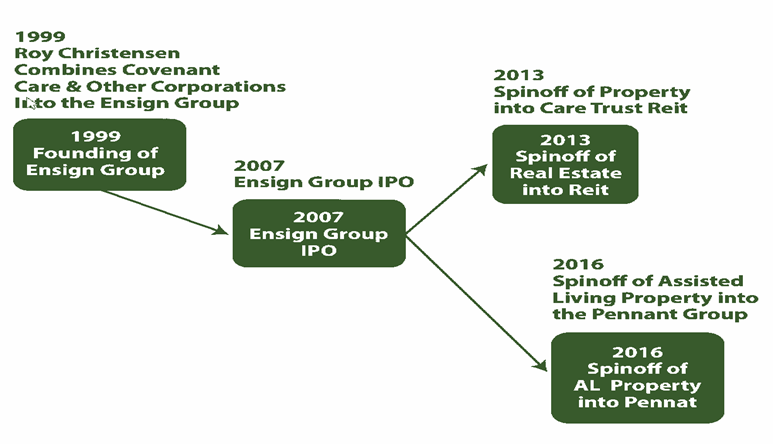The Biggest Player in Poverty Medicine Had a Banner Year in 2022
Among all U.S. corporations, Centene Corporation is ranked 20th in revenue. It is also a major player in the Medicaid Managed Care business. The other leading corporations contracting with states in the $800 billion Medicaid program include United Health, Aetna/CVS, Anthem, and Molina. Most states have moved or will be moving to managed care and contracting with an MCO. The big five have approximately half of that business now. It is likely that the Medicaid MCO market will become increasingly concentrated and oligopolistic over the next few years.
Centene can be said to be solely in the Medicaid managed care business. According to its recently released annual 10-K report to the Securities and Exchange Commission, 97% of Centene 2022 revenues of $144 billion were derived from Medicaid and Medicare contracting – practically all of it from Medicaid. The company’s cash flow statement notes $6.3 billion net cash from operating activities, which is a major indicator of “profitability.” However, that is not the whole story regarding enhancement and protection of shareholder value.
Taking Care of Shareholders by Keeping Stock Price Propped Up
Cash and cash equivalents on Centene’s balance sheet increased from $10.8 billion in 2020 – the early stages of the ongoing COVID pandemic – to $12.7 billion at the end of 2022. Taxpayers need to ask questions about how that hoard of cash is allocated. I have tracked the company’s stock since late November of 2021 when the equities market began to tank. It closed at $73.77 on November 29, 2021 and has been quite resilient despite the market decline since that time – trading in the high $70s and $80s.
The strength of Centene’s stock price is most likely due to a $3 billion stock buyback. In 2022, the company’s board “authorized increases to the Company’s existing stock repurchase program, including $3.0 billion in June 2022 and an additional $2.0 billion in December 2022.” (see page, 34 of 10-K*). With those increases, the Company was authorized to repurchase up to $6.0 billion.
Stock repurchases, which are thinly disguised forms of stock manipulation/insider trading, were unfortunately deregulated during the Clinton Administration. This financial maneuver benefits only shareholders and executives and does nothing for long-term investment in workers, R&D, patient quality, and other productive activities. The benefits for executives and board members who have been awarded generous stock options involve strategies for exercising their right to sell stock based on insider knowledge (of which the public is unaware).
Since the financial deregulation allowing loose rules about stock buybacks a corporate buyback frenzy has been underway. Free money handed out by the Federal Reserve from 2008 until Fed Chair Powell reversed course to quell inflation pumped $trillions into speculative finance, much of which was borrowed for stock repurchase. Consequently, the U.S. economy has been damaged and wealth has become increasingly maldistributed by the diversion of cash to a wealthy few that could be reinvested in long-term growth benefitting employees and overall economic growth. It seems to me to be the height of governmental irresponsibility to not regulate this kind of activity on the part of corporations which are rewarded for managing poor peoples’ health care.
Politically Powerful Board Members & Executive Board Compensation
The revolving door from government to business is starkly obvious on the Centene board, which includes two powerful former congressmen – Tommy Thompson and Richard Gephardt. Mr. Thompson is also a former Secretary of Health and Human Services. The Centene Proxy Statement for 2022 has not been issued to the public yet (we expect to see it within a month). However, the 2021 Proxy Statement indicates that Mr. Thompson’s compensation in cash and stock totaled $403,046. Mr. Gephardt’s compensation totaled $426,923. The fine print below the compensation table states that both Mr. Thompson’s and Mr. Gephardt’s compensation included use of the company aircraft and other perks.
Executive Compensation
The late Michael Neidorff had been Chief Executive and Chairman of the Board in 2019, 2020, and 2021 with compensation for those years of $26.4 million, $24.9 million, and $20.6 million respectively. His replacement, Sarah M. London joined the board in 2021 as vice chairman and received 2021 compensation of $15.2 million. The seven top executives received a total of $80 million in compensation in 2021.
Conclusion
Medicaid expenditures in the U.S. will reach $1 trillion within the next few years. Along with expenditure on military activities, this poverty program will remain one of the two biggest programs funded by U.S. income tax payers. With expansion of Medicaid under the Affordable Care Act, we anticipate that growth of tax-funded poverty medical care will be rapid in the years ahead. This raises the question of evaluation of these expenditures and public discourse about the quality of care.
My initial foray into availability of state and federal data regarding the effectiveness and regulation of MCOs leaves me with considerable doubt about what taxpayers and legislators know about outsourcing medical care for poor people. It is not difficult for me to uncover the inordinate executive compensation packages, stock buyback information, and financial performance metrics reported by major providers. However, medical and ethical, questions arise regarding the justification for cash out to investors and executives given the care provided. I will be sharing my research pertaining to Medicaid expenditures on this blog in the weeks, months, and years ahead.
*The Centene 10-K can be accessed at https://investors.centene.com/all-filings?cat=1.

